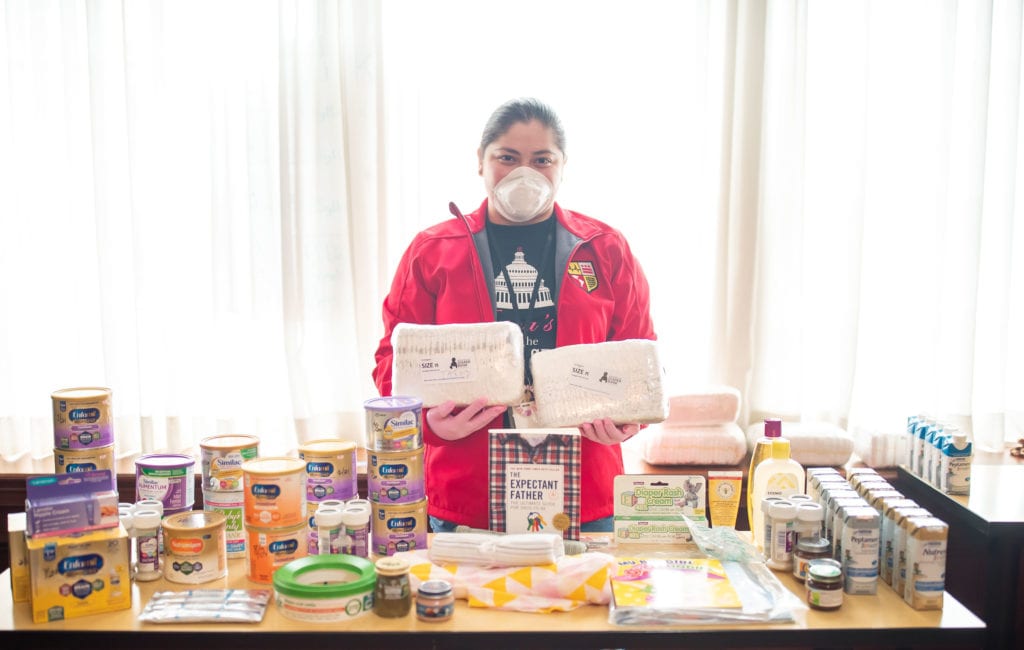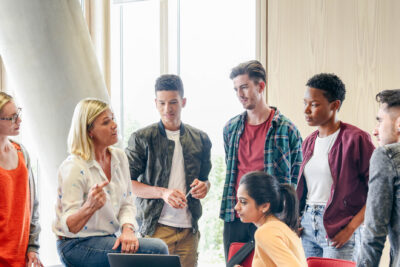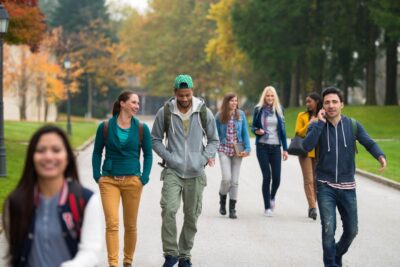100% of their students are low-income. Here’s how they support them during COVID-19.
April 17, 2020
By Kathleen Escarcha
Students who struggle with food and housing insecurity are particularly vulnerable as institutions close campus buildings, reduce dining options, and shift courses online. Many schools and colleges are currently struggling to ensure students have access to computers, internet, or resources to meet their basic needs.
The Latin American Youth Center Career Academy (LAYCCA) offers an incredible model for what serving students with a focus on equity can look like. The Career Academy is a tuition free adult charter school in D.C. that serves students ages 16-24 with college preparatory education, career training in high-growth occupations and/or college-credit classes.
All of their students are low-income and the overwhelming majority are students of color, says Nicole Hanrahan, the Executive Director of LAYCCA. Sixty-two percent of them are homeless and many of them come from communities where diabetes, heart disease, and hypertension are prevalent.
We spoke with Hanrahan and Carolyn Greenspan, the Community Schools Coordinator, to learn how they’re prioritizing equity and student success. Here are a few insights they shared for institutions hoping to protect and support their vulnerable communities.
Their responses have been lightly edited for length and clarity.
-
62%
of students at the Latin American Youth Center Career Academy are homeless.
1. Create and communicate a plan with staff, leaders, and students
Hanrahan: It became clear by late February that we would be closing at some point. Our team got together, and we started thinking about what a closure would look like and how we could continue to operate. When we heard from the mayor’s office that the closure was definitive, we only had one day to fully execute. On Friday, March 13th, we sat down with our senior leadership team and worked out a schedule to implement our distance learning plans and provide students with food and toiletries.
Because we prepared for the closure, we were able to get every student who needed one a device and internet access. We ordered ahead pantry items from the local food bank. After we announced the closure to our students, we were able to give them large bags of pantry items to take home.

Compared with others, the Career Academy was prepared to transition to distance learning: we already have individual learning plans for every single student in the school, so students knew what they needed to work on independently. Additionally, our instructors already use online resources like Khan Academy, i-Ready, and IXL, so students were used to using these online learning tools.
We were concerned that our attendance would drop significantly because our students face challenges like caring for children or siblings, not having space to learn in a small apartment, struggling with housing insecurity, or needing to work to support their families. But our school attendance has only dropped by about 12 points. And our medical assistance students have maintained 100% attendance throughout distance learning.
2. Ask students what they need
Hanrahan: We were anticipating closing, so we created a student survey. We administered it a week before the school closed and it asked questions like, do you have a computer, do you have an iPad or tablet, do you have a smartphone, and do you have internet access? And then, we asked things like, do you have a place to heat up food?
Based on the responses, we could start predicting what we would need to have. A few days before the closure, we knew exactly which students had and did not have internet access. And we knew exactly which students had and did not have a device. Once we found that some students didn’t have a device, we opened our laptop carts and gave them away to any student who needed them.

We’re still asking students what support they need. Our student support team calls every student every day. We’re aware of what people’s needs are and can jump in and help them.
3. Offer holistic support
Hanrahan: As part of our closure plan, we converted our campus into a food and essentials distribution site that’s open Monday and Thursdays so students can drop by and pick up supplies, and set up a second site at a shuttered campus in Anacostia to serve students who cannot travel to our location across the river. We provide care packages of reheatable meals that should last for three days.
Greenspan: We’re concerned not just about hunger, but also other wellness needs. One of the things that we just purchased was a whole bunch of hand soaps, just because students said they’re running out of things as basic as that. We also distribute diapers, sanitary napkins, condoms, and toiletries.
4. Recognize the long-term issues students may face
Greenspan: We knew this period would be stressful for students. Our mental health counselor has been available over video call. We’re still trying to let our students know that this resource is available, even if they’ve never seen a mental health counselor before.
Hanrahan: All our students are considered at risk of becoming sick from COVID-19. Sixty-two percent of them are homeless. Many of them come from communities where diabetes, heart disease, and hypertension are prevalent.
They’re also struggling with loss of income. Most of our students work in restaurants and retail establishments and many have been laid off. We’ll see how far unemployment benefits are extended into the future. And then there’s the plight of undocumented students, who are not eligible for such provisions that might be available to people who have lost their jobs due to the COVID-19 crisis.
Then, as we’re looking forward as a city, the lack of equity you see in schools will be exacerbated by this pandemic because the students who need the most intense academic interventions are the ones who have the least amount of access to them. These students may have competing needs to take care of, or aren’t in programs like ours, or don’t have access to devices. They’re going to get further behind whereas the wealthier students are going to be able to keep up with their work more easily.
The LAYC Career Academy is a charter school founded by the Latin American Youth Center, one of EAB’s 19 official Community Impact partners. EAB is proud to have partnered with LAYC for over six years, and EAB employees have logged more than 500 hours of service to LAYC though hands on volunteer activities, pro bono projects, and board service.
You can support the important work LAYC does to empower diverse communities by donating and support the LAYC Career Academy’s students here.
More Blogs

How to navigate policy challenges and show support for your trans students

Our LGBTQ students’ lives and wellbeing are at risk—here are 5 things campus leaders can do to help
